Apple maintains lead as top smartphone vendor in US, hits 20 percent of worldwide PC market

Following a report from Strategy Analytics earlier this month that had Apple as the No.1 mobile phone vendor in the United States for the first time, research firm comScore is out today with its stats for the three-month period ending in December 2012. ComScore looked at the top smartphone subscribers by OEM and the top smartphone platforms, which doesn’t include mobile phones other than smartphones like Strategy Analytics’ report.
According to the report, Apple was able to increase its share from 34.4-percent in the September quarter to 36.3-percent last quarter. Samsung also increased its share—although was significantly behind Apple but still up from 18.7-percent in the quarter before—to 21 percent of the market. HTC, Motorola, and LG rounded out the last three spots in the category with 10.2-percent, 9.1-percent, and 7.1-percent of the U.S. market in December. While Apple was able to grab the top smartphone vendor position, Android maintained its lead over iOS as the top smartphone platform during the quarter.
Google captured 53.4-percent of smartphone subscribers with Android in Q4, up from 52.5-percent in September. In comparison, Apple came in at 36.3-percent and posted a slightly larger increase than Android with two points from 34.3-percent the quarter before. Growth for iOS and Android, like in previous months, comes at the expense of declines for BlackBerry and Microsoft.
Canalys also released a report today that tracked worldwide PC shipments in the fourth quarter—a category that also includes iPads. According to the report, Apple continued its lead in the PC market by hitting over 20 percent for the first time with over 27 million units shipped. Macs accounted for 4 million of those units, while the report estimated iPad mini made up about half of the remaining 23 million iPads:

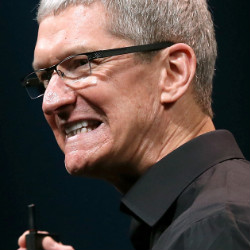
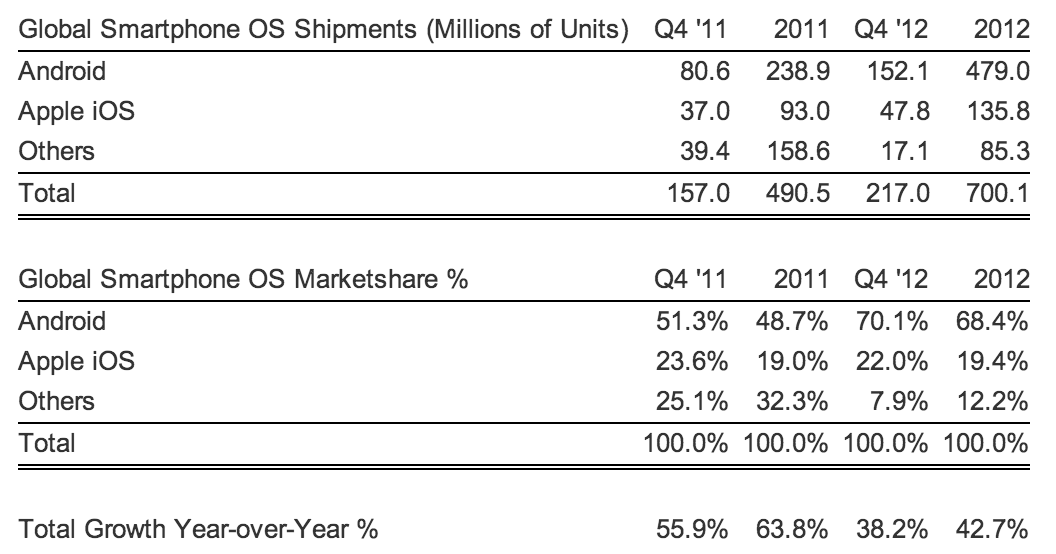


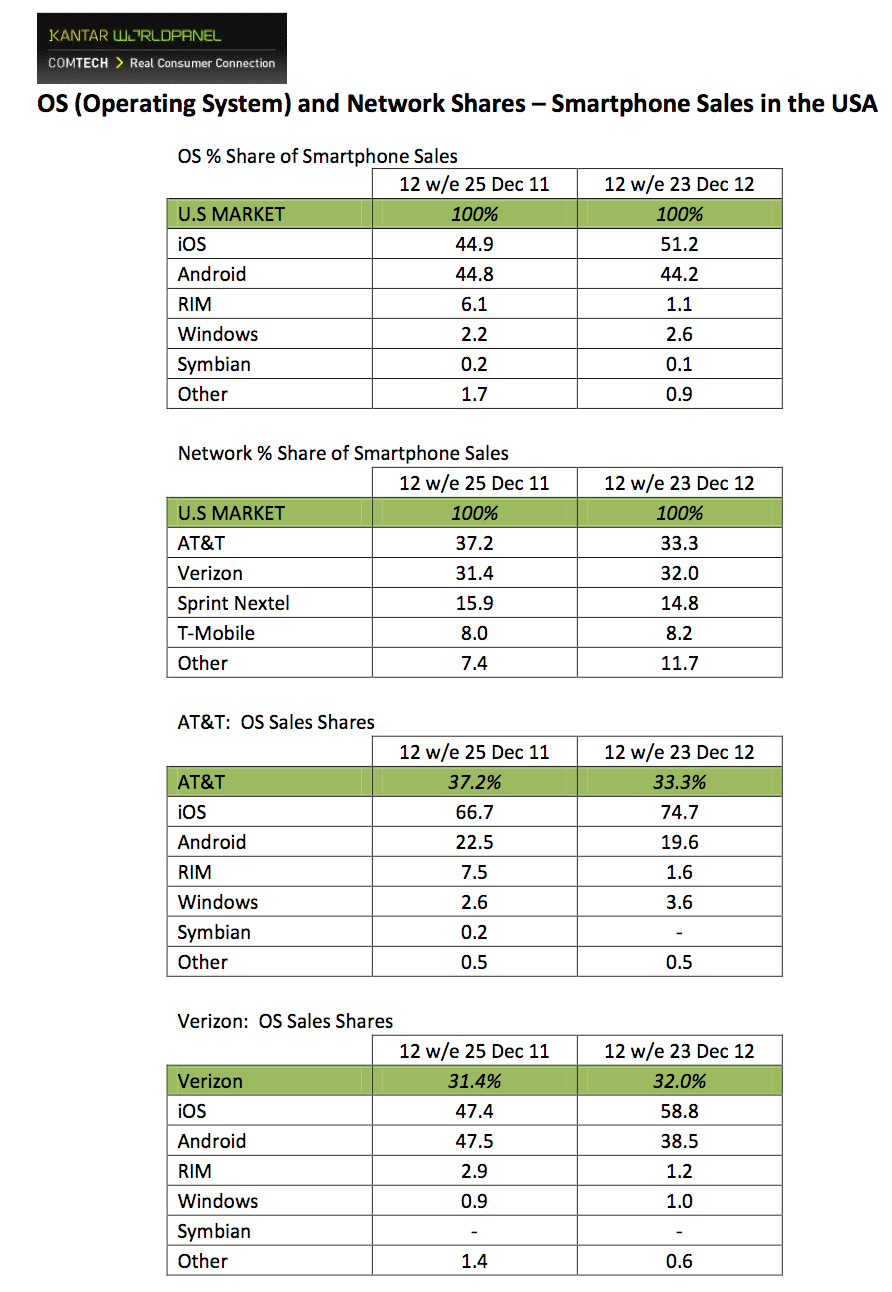 Apple was able to maintain its lead of smartphone sales in the U.S. market during the holiday quarter ending Dec. 23, according to
Apple was able to maintain its lead of smartphone sales in the U.S. market during the holiday quarter ending Dec. 23, according to 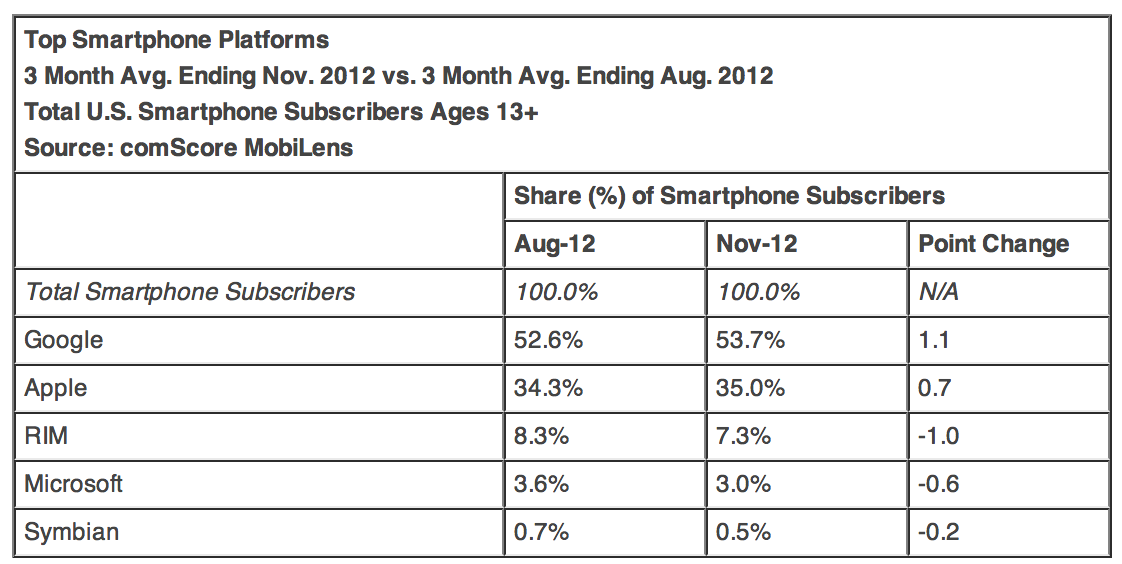
 As for the U.S. market by platform, iOS and Android both experience slight gains over August numbers. With a joint 88.7-percent of the market for Apple and Google, RIM is the closest competitor dropping from 8.3-percent of the market in August to just 7.3-percent in November. Microsoft dropped from 3.6-percent to 3 percent:
As for the U.S. market by platform, iOS and Android both experience slight gains over August numbers. With a joint 88.7-percent of the market for Apple and Google, RIM is the closest competitor dropping from 8.3-percent of the market in August to just 7.3-percent in November. Microsoft dropped from 3.6-percent to 3 percent:



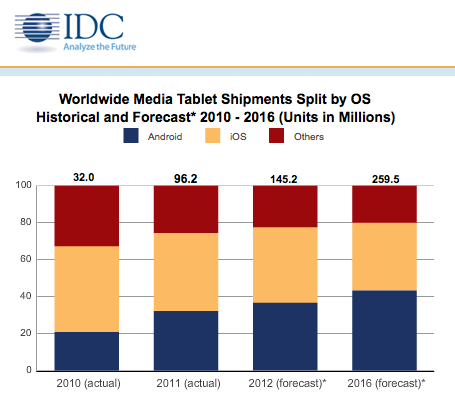
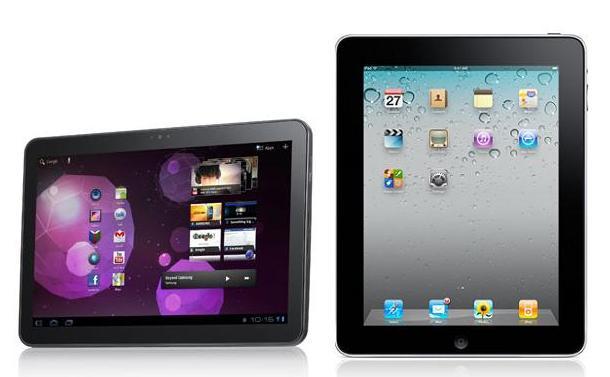

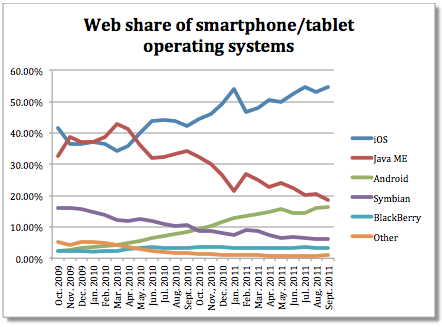
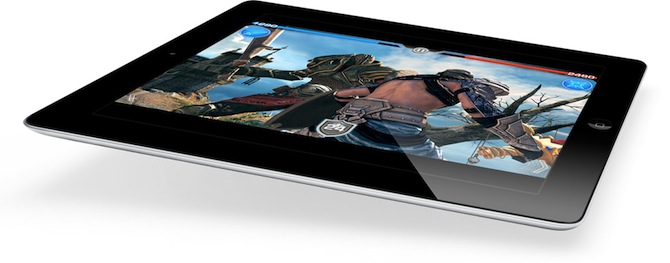
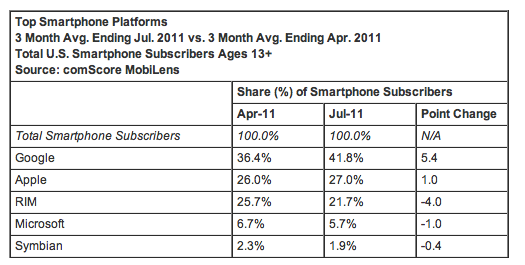

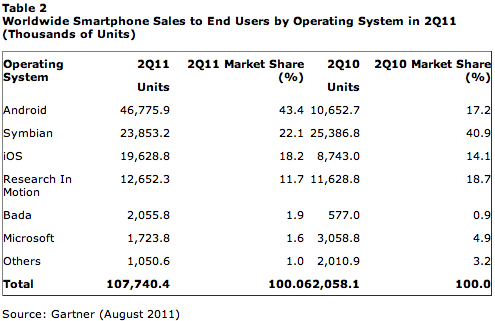
 Meanwhile Blackberry continued its paced slide down another 2 points quarter over quarter while Samsung’s Bada made modest gains. In the “Other” category, Windows Phone 7 somehow lost market share falling from 2% to 1% and Windows Mobile is now off the charts. HP’s webOS is somewhere in the “other” as well with Meego and the ghosts of smartphone past.
Meanwhile Blackberry continued its paced slide down another 2 points quarter over quarter while Samsung’s Bada made modest gains. In the “Other” category, Windows Phone 7 somehow lost market share falling from 2% to 1% and Windows Mobile is now off the charts. HP’s webOS is somewhere in the “other” as well with Meego and the ghosts of smartphone past.